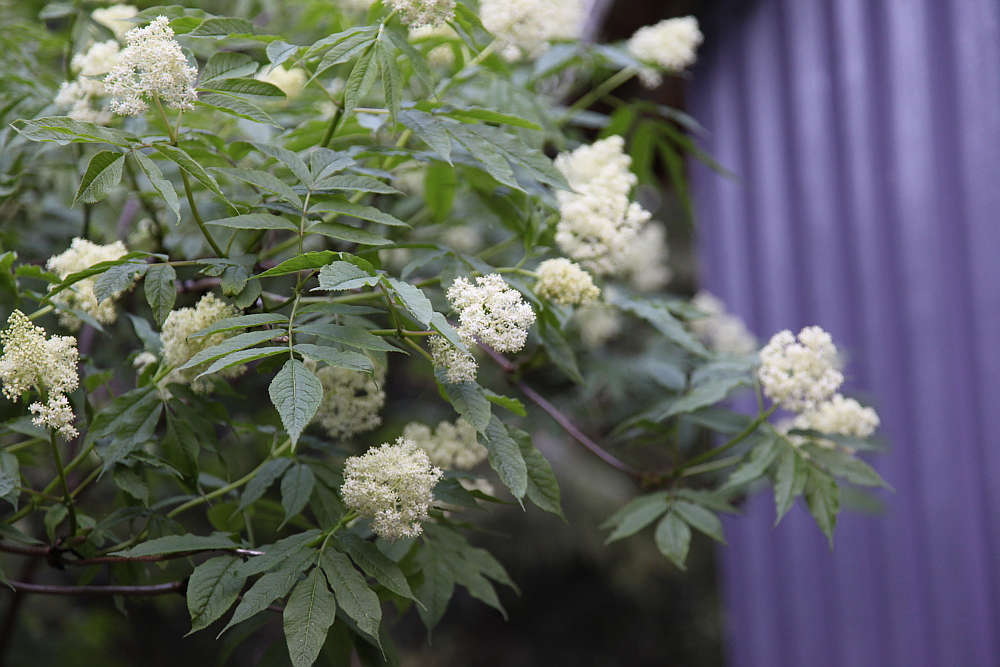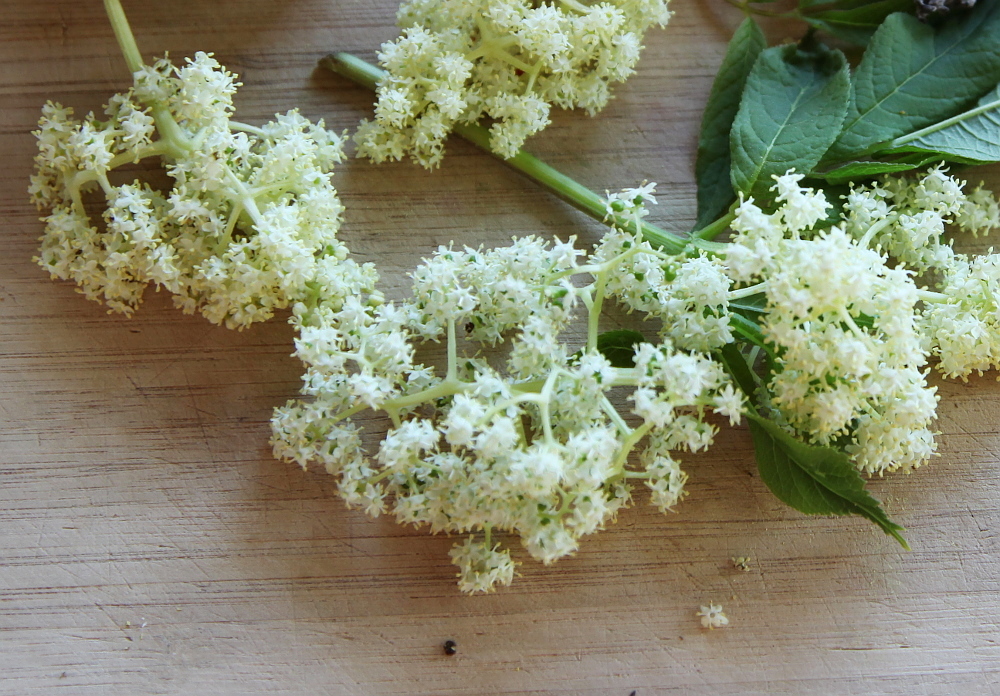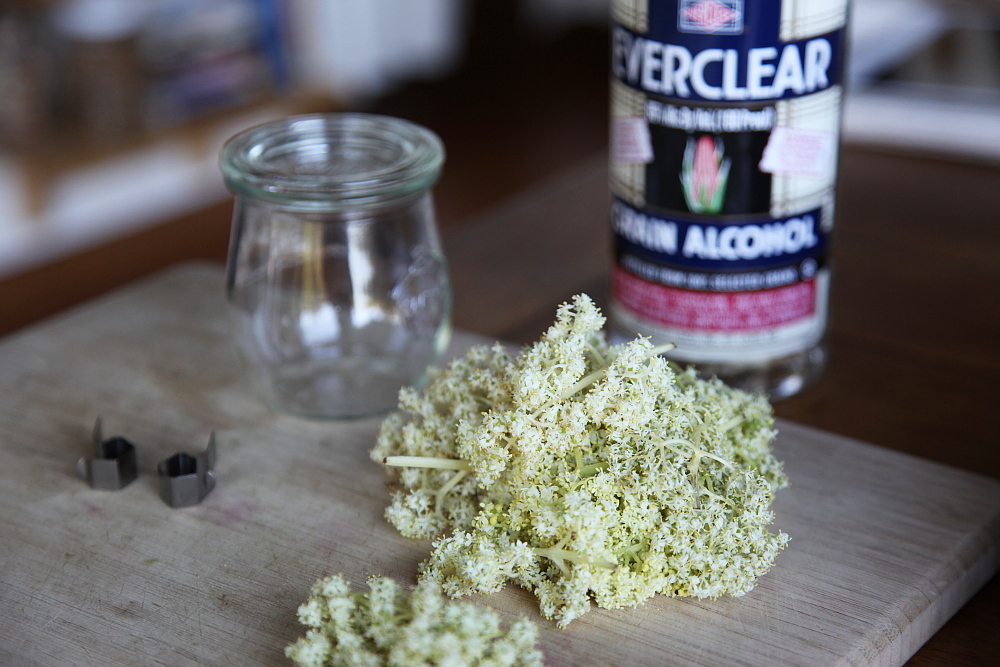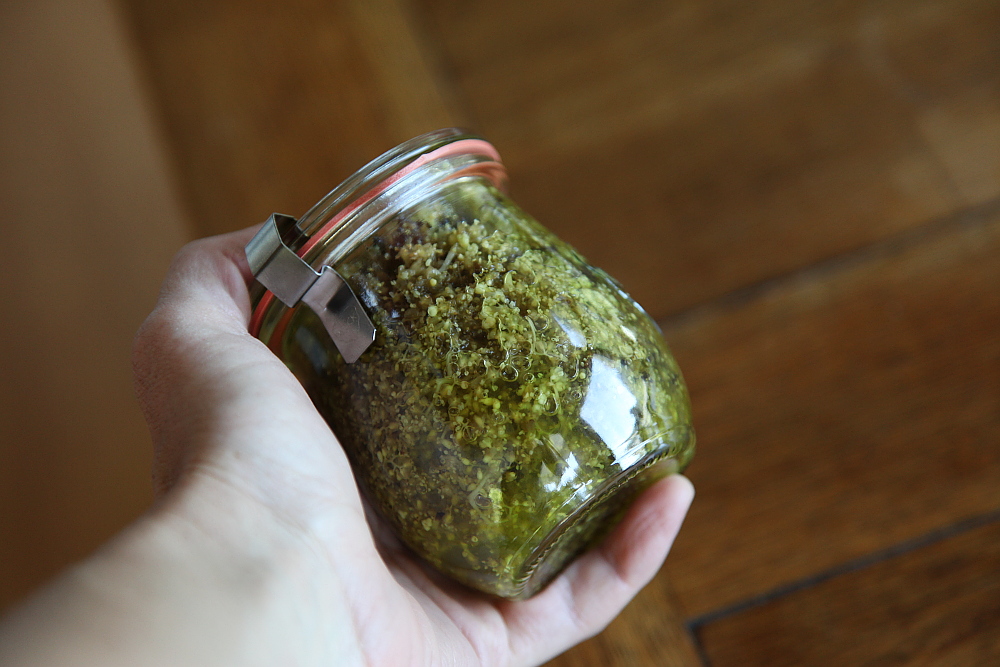Red elder trees are blooming everywhere right now. They are all along the roadsides out here near the lakes on the edge of the woods, and there are a couple growing right in our yard. Until recently, when I was reinspired by a photo of elderflowers intended for cordial, by my friend halley, I had pretty much ruled them out as a useful plant, knowing that the leaves and fruit contain toxic “cyanoglycoside sambunigrin.” With more research, the fruit turns out to actually be edible if prepared correctly (cooked and de-seeded), and is used by some to make jam. I did some further research and learned that the flowers of red elder are safe and gentle for internal and external use, and can make a beautiful, healing addition to the medicine cabinet. The flowers of the elder tree – both red and black – are the most mellow part of the plant.
Please do your research, and always double triple quadruple check when identifying a plant that is new to you if you plan to consume it or apply it to your skin.
I harvested a few elder flowers from each tree in our yard, and some from a few different trees off a roadside nearby. It’s getting late for collection and I think I just made it. Many flower clusters are now transitioning toward the fruiting stage.
I made a tincture with some of the flowers, and used the rest for another project I will share soon. For the tincture, I separated the flowers from the stems, loosely chopped them, and filled a jelly jar (about 7 ounces) with them. I covered the herb with 3 parts Everclear to 1 part water. I labelled my jar, and tucked it into a dark cabinet and will shake it each day. It should be ready for use in 4-6 weeks.
I would have been more selective in my alcohol choice, but Everclear is what we had on hand. As a little aside, Everclear makes an excellent disinfectant. We fill small spritz bottles with it, and take it with us when we are out and about to keep our hands clean. We also make a deodorant spray with a simple combination of Everclear and essential oil. It works great!
Elderflower has diaphoretic, diuretic, anti-inflammatory and expectorant properties. The flowers have long been used to treat many kinds of inflammatory and congestive conditions of the respiratory tract, and has been traditionally used to treat flu, colds, mucus, sinusitis, feverish illnesses and other upper respiratory tract problems, as well as hay fever. Externally, elderflower soothes irritable, itchy skin.
I will try to report back in a month or so, when it’s time to strain and bottle our tincture.
Do you make your own medicinals? If so, what are some of your most used medicinal herbs?
[a few references:
Prescription for Nutritional Healing by Phyllis A. Balch
http://www.sacredearth.com/ethnobotany/plantprofiles/elder.php
http://www.ageless.co.za/herb-elder-flower.htm ]





Seasonal Skincare – ShopInfusion
[…] oils one chooses, the process is generally the same. And I wrote about making elderflower tincture here. Again, while each tincture may differ, depending on the herbs or alcohol you choose, the process […]